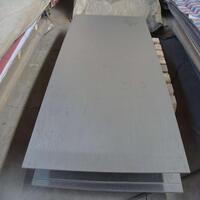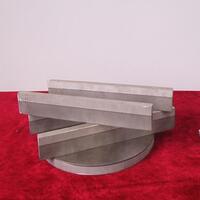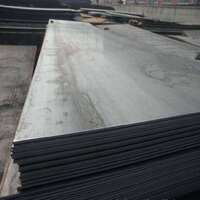1. Introduction
If you’ve ever admired a sleek modern building with shimmering steel panels or noticed the rust-like finish of a trendy corten steel facade, you’ve seen metal clad in action. But what exactly does ‘metal clad’ mean? In simple terms, metal clad (or metalclad) refers to a composite material or structure where one metal is bonded to another—either for enhanced performance, corrosion resistance, cost efficiency, or aesthetic appeal. From metal clad siding on homes to clad steel in industrial pipes and even metal clad electrical wire, this versatile technique spans architecture, manufacturing, and engineering.

2. Understanding Clad Metal Meaning
2.1. What Is Metal Clad Meaning?
The term ‘metal clad meaning’ describes any product or system where a base metal is covered—or ‘clad’—with a different metal layer. This isn’t just surface-level painting; it’s a metallurgical bond, often achieved through rolling, explosion bonding, or electroplating. The result? A hybrid material that combines the strength of one metal with the corrosion resistance, conductivity, or visual qualities of another.
2.2. Common Types of Clad Metals
Clad metals come in many forms. Examples include aluminum clad stainless steel (stainless core with aluminum exterior), stainless clad aluminum (aluminum core with stainless skin), titanium clad for aerospace use, and copper nickel clad for marine environments. Even everyday items like aluminum clad steel wire or cu clad wire rely on this principle for better performance and longevity.
3. Metal Clad in Architecture and Building Design

3.1. Metal Clad Walls and Facades
Architects love metal clad walls for their durability and modern look. Popular choices include corrugated steel facade panels, zinc facade systems, and corten steel siding—which develops a protective rust patina over time. A corten steel facade not only looks industrial-chic but also requires minimal maintenance. Similarly, zinc metal siding and copper siding offer timeless elegance with natural weathering properties.
3.2. Metal Clad Roofs and Siding
Roofing options like zinc clad roof, colorbond standing seam, and pac clad standing seam roof are increasingly common. Vertical standing seam metal siding and exterior corrugated metal siding provide both function and style. For sheds or outbuildings, a metal clad shed offers affordability and resilience. And for homeowners, a steel clad house or metal clad house blends sustainability with striking curb appeal.
3.3. Specialty Architectural Elements

Designers also use metal cladding for details like pac clad column covers, pac clad coping, and zinc clad dormers. These elements enhance visual continuity while protecting underlying structures from weather and wear.
4. Industrial and Engineering Applications
4.1. Clad Steel and Metal Plates
In heavy industry, clad steel is essential. Boiler plate steel, carbon steel plate, and stainless steel plate are often clad with corrosion-resistant alloys like Inconel or nickel for use in chemical plants or oil refineries. You’ll also find alloy clad plates such as 2024 T3 clad or 7075 T6 clad in aerospace, where strength-to-weight ratios matter.
4.2. Metal Clad Insulation and Piping
Aluminum clad pipe insulation is widely used in HVAC and industrial systems to reflect heat and protect insulation materials. Similarly, metal clad insulation wraps ducts and tanks to improve energy efficiency and safety.
4.3. Metal Sheets and Plates for Sale
From 1/8 inch steel plate to thick steel plate, and from aluminum diamond plate to stainless steel checker plate, these materials are foundational in fabrication. Whether you need 6061 T6 aluminum plate for machining or 316 stainless steel plate for marine use, clad and solid metal plates are available in countless grades and finishes—often searchable as ‘steel plate near me’ or ‘aluminum sheet for sale.’
5. Electrical and Wiring Uses
5.1. Metal Clad Electrical Wire
Metal clad electrical wire (often called MC cable) features insulated conductors wrapped in an interlocked metal armor—typically aluminum or steel. This provides mechanical protection and is commonly used in commercial buildings, including in Pennsylvania, where codes permit its use. Aluminum clad steel wire and aluminum clad wire are also used in grounding and signal applications.
5.2. Installation and Safety
Running metal clad cable through an exterior wall requires proper fittings and sealing to prevent moisture ingress. While it can be surface-mounted, local codes dictate whether AFCI breakers are needed. Always verify amperage ratings—10/2 metal clad cable, for instance, is typically rated for 30 amps, not 50.
6. Finishes, Coatings, and Treatments
Beyond cladding, metals are enhanced through processes like electroplating, chromium electroplating, and electroless nickel coating. Gold coating, nickel sulfamate plating, and chrome carbide overlay extend component life in harsh environments. Perforated plate, diamond plate sheet, and metal plate with holes serve both functional and decorative roles.
7. Cost Considerations
Prices vary widely. Corten steel siding cost (or corten siding cost) is higher than standard steel but justified by its longevity and low maintenance. Similarly, pac clad HWP or stainless steel metal plate may carry a premium, but they deliver performance where it counts.
8. Conclusion
Metal clad is far more than a buzzword—it’s a smart engineering and design strategy that merges form and function. Whether you’re choosing a metal clad roof for your home, specifying clad steel for a refinery, or installing metal clad electrical wire in a commercial space, understanding the options and benefits helps you make informed decisions. With innovations in materials like aluminum clad stainless steel, titanium clad panels, and sustainable corten steel, metal cladding continues to shape the future of construction and industry.
Our Website founded on October 17, 2012, is a high-tech enterprise committed to the research and development, production, processing, sales and technical services of ceramic relative materials such as What. Our products includes but not limited to Boron Carbide Ceramic Products, Boron Nitride Ceramic Products, Silicon Carbide Ceramic Products, Silicon Nitride Ceramic Products, Zirconium Dioxide Ceramic Products, etc. If you are interested, please feel free to contact us.
